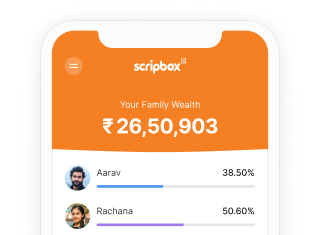Are you looking for where to invest ₹50 lakhs for a fixed monthly income? There are many investment plans to help you achieve this. It all depends on your current situation. Are you looking at this for retirement income, early financial independence, or supplementing your salary?
The proper mix of investments can help you cover your monthly outflows while protecting your capital or even increasing it in the long run. Here are some investment plans in India that can provide you with a fixed monthly income.
How to Invest ₹50 Lakhs for Monthly Income?
Here are some investment options where you can invest ₹50 lakhs to earn a monthly income:
| Scheme | Expected Annual Return | Expected Monthly Income |
| Debt Mutual Funds: Systematic Withdraw Plan* | 6% | Rs. 25,000 |
| Fixed Deposits** | 7.50% | Rs. 31,250 |
| Corporate Deposits** | 9% | Rs. 37,500 |
Note: The above table is for illustrative purposes only and does not constitute investment advice. The actual returns and income may vary depending on various factors such as market conditions, taxation, charges and fees.
*Mutual funds returns are subject to market risks and do not guarantee returns. With the SWP option, investors can regularly withdraw their invested capital.
**The monthly income from FD and CD is the interest generated from the principal amount. On maturity, the principal is repaid to the investor.
Debt Mutual Funds: Systematic Withdrawal Plans
Systematic withdrawal plans (SWPs) are a way of getting regular income from your mutual fund investments. You can choose any mutual fund scheme that suits your risk profile and investment objective and start an SWP.
You can specify the amount and frequency of withdrawal, which can be monthly, quarterly, half-yearly or annually. The fund house will redeem the units equivalent to the withdrawal amount and transfer it to your bank account.
SWPs benefit investors who want to create a steady source of income from their investments without compromising on capital growth. SWPs are also tax-efficient, as only the capital gains portion of the withdrawal amount is taxed. The taxation depends on the type and duration of the fund.
Fixed Deposits
Fixed deposits (FDs) are one of the most popular and safe investment options for earning monthly income. You can open an FD account with any bank or post office and deposit a lump sum amount for a fixed tenure ranging from 7 days to 10 years.
You can choose the interest payout option as monthly, quarterly, half-yearly or annually. The interest rate varies depending on the tenure, amount and bank. Generally, longer-tenure FDs offer higher interest rates than shorter ones.
The FD interest income is only for the duration of the deposit. To generate continuous monthly income, you must renew the deposit at the end of the tenure. Most banks offer auto-renewal of FDs, but the renewal will happen at the prevailing interest rates.
FDs are suitable for investors who want guaranteed returns and low risk. But they also have some drawbacks. They are not very liquid, are not inflation-adjusted, and are not tax-efficient.
Corporate Deposits
Corporate deposits are fixed deposits offered by non-banking financial companies (NBFCs) and corporations to raise funds from the public. They have tenures ranging from 1 year to 5 years and pay interest monthly, quarterly, half-yearly, or annually.
The interest rate of corporate deposits depends on the issuer’s tenure, amount, and credit rating. Generally, corporate deposits offer higher interest rates than bank FDs but lower than equity funds.
Corporate deposits are suitable for investors who want higher returns and regular income. However, they also have some risks.
Similar to fixed deposits, corporate deposits earn interest only for the tenure of the deposit. At the end of the tenure, you must invest in a new deposit scheme to generate monthly income.
Government Bonds
Government bonds can be considered by risk-averse investors seeking stable and predictable returns. These are long-term debt instruments issued by the Government of India, with maturities ranging from 5 to 40 years. Bonds pay fixed interest (coupon) periodically which can be used as a reliable income stream.
Since the sovereign backs them, they carry virtually no default risk. However, they are less liquid, and early exits may come with restrictions or price fluctuations.
Conclusion
Investing ₹50 lakhs for a steady monthly income is about securing your future and peace of mind. The choices you make today will shape how comfortably you live tomorrow, balancing risk, return, and inflation. No single investment fits all; a thoughtful mix tailored to your goals and risk appetite is key.
So, the answer to the question of where to invest 50 lakhs for monthly income lies in your vision, goals, and the strategy you choose to follow.
FAQs
You can invest in fixed and corporate deposits, SWPs, and government bonds to generate steady monthly income. A mix of low-risk and market-linked options works best.
Retired investors can split ₹50 lakhs across senior citizen savings schemes (SCSS), fixed deposits and SWPs for safety and consistent income. Choose based on risk appetite and cash flow needs.

















Show comments